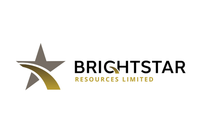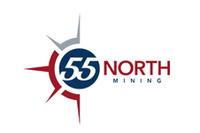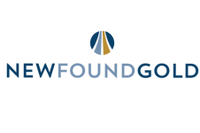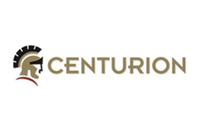Tale of Two Metals: How Rising Gold, Uranium Price Impacts Supply

Current global economic and geopolitical factors are converging to create strong prospects for gold and uranium.
Economic and geopolitical factors indicate that 2024 is a good year for gold and uranium, creating opportunities for operators and investors. The uniqueness of this commodities market needs careful analysis.
Uranium fundamentals remain strong due to tightening supply and growing demand. The uranium space is seeing more M&A activity than exploration. Debates continue over nuclear power policies and the increased influence of China and Russia over the market.
Despite challenges with permitting, project financing and securing agreements, the uranium sector is experiencing a bull market. The price of uranium witnessed a nearly 70 percent rise in 2023, with the spot price reaching as high as US$82.30 per pound.
At the same time, gold is also experiencing a surge. Because gold is almost indestructible, the 6.7 billion ounces already mined remain in the world as jewelry, bars and coins. Further demand comes as some central banks have again begun buying gold.
Economic and geopolitical factors
Analysts forecast a uranium supply deficit, as more reactors are brought online while uranium production has stalled.
On the demand side, there is growing recognition of nuclear power for providing reliable, carbon-free electricity as countries chase decarbonization targets. As a result, governments across the world are pushing to increase their nuclear energy capacity.
China is expanding its nuclear fleet and Japan is restarting reactors closed after Fukushima. Even the anti-nuclear convictions of Australia — it restricted uranium mining and banned nuclear power — are wavering due to underperforming wind and solar projects. If its extensive uranium resources become available, Australia has the potential to rebalance global supply.
Chinese, Russian and western actors compete in Africa, which hosts numerous undeveloped uranium deposits. Niger and Namibia are between opposing spheres of influence. The Niger coup added uncertainty because the new regime hasn’t announced its intentions for uranium development and exports.
The US government supports uranium producers and is investing in domestic enrichment facilities. New North American production, however, needs time and sustained higher prices to be economically viable.
For western governments, the challenge is balancing energy security and economic reality. Russian nuclear fuel has been inexpensive. Switching to other supplies will be expensive. There’s also insecurity over the speed with which western suppliers can produce enough if Russian material is prohibited.
As for gold, the consumer price index doesn’t include taxes for North Americans. And yet taxes are the largest cost of living — larger than shelter, food, transportation and energy, combined. Gold provides a hedge.
If the purchasing power of savings declines at 7 percent compounded, and the US 10 year Treasury pays 4.3 percent, then investors in that benchmark security and saving asset are losing 2.7 percent every year compounded for 10 years. That 2.7 percent annual loss is the reason to own gold.
Supply/demand dynamics
Although uranium prices have been soaring, this phenomenon does not necessarily change the supply dynamic, at least not immediately. Large uranium producers — especially Kazatomprom in Kazakhstan — have moved from maximizing volume to reducing production in bids to raise prices.
While some idle mines have been restarted in Africa, Canada and Australia, the industry needs greater supply. Annual consumption is about 180 million pounds, while current production is around 150 million pounds.
The industry needs investments in new mining projects to meet the growing demand for uranium. Current uranium prices, however, do not warrant the initial capital expenditures necessary for those projects. Hence, many companies focus on M&A instead of new developments, which suggests prices have further room to climb before new supply becomes available.
The uranium market offers investment opportunities from exploration and mining to fuel fabrication and utilities. One way to invest in uranium is through publicly traded mining companies.
Junior exploration companies search for new deposits or advance early stage projects and offer high risk and rewards. Potentially volatile stocks yield substantial returns upon successful discoveries.
Advancing projects toward production offers midrange risk and reward. Development-stage companies have defined resources while looking for financing and building mines.
Uranium royalty companies finance miners in exchange for a share of future production and different risk profiles.
Cameco (TSX:CCO,NYSE:CCJ) and Kazatomprom provide stable exposure to uranium prices, with the operating mines and accompanying cash flows of established producers.
Half of the global uranium supply comes from Cameco in Saskatchewan and Kazatomprom in Kazakhstan. Both have signalled that operating challenges have reduced uranium production below expected output. That may have contributed to rising prices, which have motivated small producers to reopen previously uneconomical mines shuttered after the 2011 Fukushima disaster, when uranium prices fell and countries began closing nuclear reactors.
The International Atomic Energy Agency estimates world uranium requirements will reach 100,000 tonnes annually, over twice the amount currently mined and processed.
On the gold front, lower interest rates make this precious metal more attractive. Bonds currently provide higher yields, thanks to central bank interest rates.
Presently, markets are acting as if the gold price is much lower than it is. Major producers are trading at discounts to their net asset values, creating investment opportunities.
Promising projects
As two of the best-performing mineral resources on the market, the spotlight is certainly on uranium and gold. As a result, it has put increased focus on prospective projects with the potential for impacting the supply dynamic for these minerals.
As a company with a portfolio of drill-ready, highly prospective uranium and gold assets, Piche Resources (ASX:PR2) presents a compelling investor proposition. Located in tier one mining jurisdictions in Argentina and Australia, Piche’s projects include: the Ashburton uranium project in the prolific Pilbara region in Western Australia; the 1,300 square kilometre Sierra Cuadrada uranium project in Argentina; and the Cerro Chacon gold project, also in Argentina, which covers 365 square kilometres with an extensive mineralised system consistent with the surface signature at Newmont’s (TSX:NGT,NYSE:NEM) 5.8 million ounce Cerro Negro gold mine.
Ashley Gold (CSE:ASHL) also has both gold and uranium projects. The Sahara uranium project is in Utah, and the Tabor Lake gold project is in northern Ontario.
Boss Energy (ASX:BOE,OTCQX:BQSSF) has started production at its Honeymoon uranium project in South Australia, for which the company has two binding sales agreements to sell approximately 1.8 million pounds of U3O8 to major western utilities by 2032. The company also owns 30 percent of the Alta Mesa project in Texas, US.
Focused on gold, Brightstar Resources’ (ASX:BTR) assets include over a million ounces of gold resources and on-site processing infrastructure in the Laverton tectonic and Menzies shear zones in Australia.
In Colombia, junior company Quimbaya Gold (CSE:QIM,OTCQB:QIMGF) is exploring for gold in the mining district of Antioquia. Its projects are surrounded by successful gold operations that provide access to infrastructure.
Key takeaway
Current global economic and geopolitical factors are converging to create strong prospects for gold and uranium. The mining industry is leveraging this trend to advance high-potential projects and ultimately impact global supply.
This INNSpired article is sponsored by Piche Resources (ASX:PR2). This INNSpired article provides information which was sourced by the Investing News Network (INN) and approved by Piche Resources in order to help investors learn more about the company. Piche Resources is a client of INN. The company’s campaign fees pay for INN to create and update this INNSpired article.
This INNSpired article was written according to INN editorial standards to educate investors.
INN does not provide investment advice and the information on this profile should not be considered a recommendation to buy or sell any security. INN does not endorse or recommend the business, products, services or securities of any company profiled.
The information contained here is for information purposes only and is not to be construed as an offer or solicitation for the sale or purchase of securities. Readers should conduct their own research for all information publicly available concerning the company. Prior to making any investment decision, it is recommended that readers consult directly with Piche Resources and seek advice from a qualified investment advisor.






